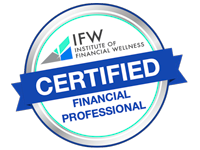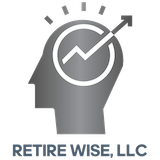Sequence-of-returns risk could undo years of careful planning

Here’s how that happens, and a couple of ways to help avoid it.
The last several years leading up to and the first few years of retirement can make or break your portfolio.
Sequence risk is one of the largest risks someone new to retirement faces. In fact, this risk starts 5-10 years before retirement!
Many Americans wisely set aside money for the day when they can stop working, kick back, and enjoy the twilight years of their lives.
But be warned: All your careful retirement planning could be tripped up by something known as the sequence-of-returns risk. That is to say, when you retire and start withdrawing money from your accounts, your portfolio balance can be affected not just by how much your investments go up or down, but by when they go up or down.
A Happy Tale of Two Retirement Savers
To better see why that is so, let’s imagine two investors, Bill and Joe, who are in the accumulation phase of financial planning for retirement.
Each of them invests $100,000 in his portfolio and lets the money ride, not withdrawing a single cent for 15 years. Over the course of those 15 years, they experience the same percentage returns on their investments, just not in the same order.
Bill starts out like gangbusters. The first five years, his annual percentage of returns are all in double figures.
Joe’s luck is not so good. His annual returns are on the negative side. All in all, it’s a dreadful first five years for him.
In the middle five years, both men post the same unremarkable but decent returns. Finally, Joe is starting to get into the positive.
Then things get really interesting.
Joe suddenly finds extraordinary market success and his final five years provide him the exact same double-digit returns Bill had starting out. Bill, meanwhile, is experiencing the opposite. His run of good luck is over, and his final five years are negative percentages that mirror exactly Joe’s demoralizing initial years.
So, after 15 years of ups and downs, who came out ahead? Is Bill the winner with his fast start, or did Joe edge him out in the end with that spectacular finish?
The answer is: It’s a tie. In this scenario, the order in which the returns happened is irrelevant. It does not matter that Bill started strong and finished weak, while Joe did the opposite. Since they had the same percentage returns, just in a different order, they would finish with the same portfolio balances.
But that’s true only because they were not touching their money.
A Scary Tale for one of Them After He Retires
Now let's put Bill and Joe through that same 15-year scenario with those same returns, but let’s add a new twist. This time the two men have retired and both have decided to withdraw $7,000 annually from their portfolios.
If you suspect things are about to get tricky, you are correct.
This time around, Joe, who starts of his retirement with a run of bad luck in the stock market, hits serious trouble. He is withdrawing money to help with living expenses at the same time that his portfolio is shrinking because of those early negative returns. That means his balance is facing a double whammy, and it’s falling fast.
By the time the final five years arrive, when Joe’s portfolio could make a comeback with big returns down the stretch, it’s too late. His balance has already dropped to zero.
Bill, meanwhile, is in much better shape. His retirement starts with great stock market returns but ends with a series of losses. At the end of the 15 years, even after making all those withdrawals and even with those terrible final five years of negative returns, he would still have a sizable balance remaining in his portfolio.
Once again, the two men started with the same amounts of money and experienced the same returns, just in reverse order. But this time, the situation was fatal for Joe’s portfolio because his bad years came up front. The situation was positive for Bill because he enjoyed a decade of good or great returns before things turned gloomy.
And that is the sequence-of-returns risk in a nutshell. In retirement, early losses can put you in so much of a hole you can’t recover.
Some Ways to Avoid the Sequence-of-Returns Danger
The problem is clear, but what can you do about it? Let’s look at the different ways you can mitigate sequence risk.
In a great article, Dr. Pfau describes four ways to manage sequence risk. He lists reduce volatility, spend conservatively and flexible spending as three ways. Finally, he describes buffer assets as the fourth way.
Two of the four are about reduced spending (such as the 4% rule), and the other is to attempt to reduce the volatility of the portfolio. The reduction in volatility means less time with a negative portfolio from which to potentially withdrawal.
Buffer assets are a great and interesting concept. These assets are non-correlated with the stock market, More on this in a minute.
Reduce Volatility / Risk Exposure:
During downturns in the market, think about strategies and investments that may be less affected by the chaos. 1. Build a lifetime spending floor with income annuities. 2. Build a retirement income bond ladder 3. Rising equity glide path in retirement ( equity allocation that is even lower than typically recommended at the start of retirement, but then slowly increase the stock allocation over time.) 4. Use financial derivatives to cut downside risks (this is a little more complex and has some associated risk)
As you approach retirement, you can begin to move some of your assets into lower-risk investments, such as bonds. That can help shield a portion of your money from market volatility. But you also give up potential for growth, so you might want to keep a certain amount of your portfolio in more aggressive investments.. A better option to include in your plan, that reduces risk and maintains some growth is a deferred annuity.
Buffer Assets:
Like many terms in retirement planning, “buffer asset” is a slang term and Dr Pfau derived the term from cash value life insurance’s “volatility buffer.” Specifically, refers to buffer assets as those assets outside of your investment portfolio where returns are not correlated with the stock market. So they can be used to prevent negative dollar cost averaging. That is, if the market is down, you don’t have to sell low in order provide income during retirement. Selling low locks in the losses and is the only cardinal sin in investing. Instead, use/harvest a buffer asset when the market is down.
As examples, Pfau cites cash value life insurance (permanent life insurance) and reverse home mortgages. Both can be a valuable tool/asset for retirement.
You can “borrow” the cash value of a permanent life insurance product tax free. The results of using this in a downturn to mitigate risk is impressive. You can pay back the money you borrow from your life insurance or it can be deducted from the death benefit when the time comes. In order to deploy this tactic, you need to set these policies up way before you retire, the younger the better performance/results.
Reverse mortgages have become slightly more popular in the last few years.
Home Equity Conversion Mortgage (HECM/Reverse Mortgage) can be used early in the planning process, rather than as a last resort. HECMs are non-recourse loans, which means as long as the property is kept up and property insurance and taxes are paid, the homeowner keeps title and cannot be evicted. Loan-to-value amount is based upon the owner’s age (you must be at least 62) and current interest rates.
HECMs have a line of credit option which is of most interest. You can open the account and only use it if needed. Also of note, this line of credit grows larger with time.
In order to combat a negative sequence, draw on your line of credit in years when equities are down in order to avoid reverse dollar cost averaging. Money from the line of credit is tax free, which may be especially important if you are getting income from your fully taxable IRA, or if additional ordinary income would increase taxation of social security, or cause increased Medicare surcharges.
Spend Conservatively and Flexible Spending (combined):
Variable spending strategies are important for retirement income planning. Logically and emotionally, this is what most retirees will do during down markets. Reducing spending after portfolio decline is effective in mitigating sequence risk. It is also a natural behavior when the economy is in recession. Sequence risk is mitigated here by reducing spending after a portfolio decline, thereby allowing more to remain in the portfolio to experience any subsequent market recovery.
Limit how much you withdraw. In the above scenario, Joe withdrew the same amount of money every year, regardless of his remaining balance. When managing withdrawals, some people use what is called the 4% rule, where they withdraw 4% the first year, then adjust that amount for inflation in succeeding years. But to try to dodge the sequence-of-returns risk, you instead might need to withdraw a specific percentage of whatever balance is left each year and not worry about accounting for inflation. The downside: That percentage might not provide you as much money as you need.
Be prepared
It’s easy to see how these scenarios can play out in real life as you plunge into retirement. How long your money lasts could be affected by how well the market is doing when your retirement begins. However, you can plan and put things in place to mitigate that risk.
A bull (positive) market those first few years would be good news. On the other hand, a bear (negative) market to start out could spell disaster. You need to do whatever you can to guard against the latter.
Usually you don’t want to work out those plans alone, consult with a financial professional for careful planning. That person can help you sort out ways to reduce the chances that the sequence-of-returns risk will decimate your portfolio - and your retirement along with it.
I can help you put plan in place to reduce this risk and Retire Happy!
Contact me on my web page or email me at [email protected]
Check out my website at www.retirewisepro.com
#retirementplanning #protectmyretirement #retirehappy



Retirement Planning
Sources: Kiplingers, Dr. Pfau, Lincoln Financial, Frank Diana & Alfa Insurance






